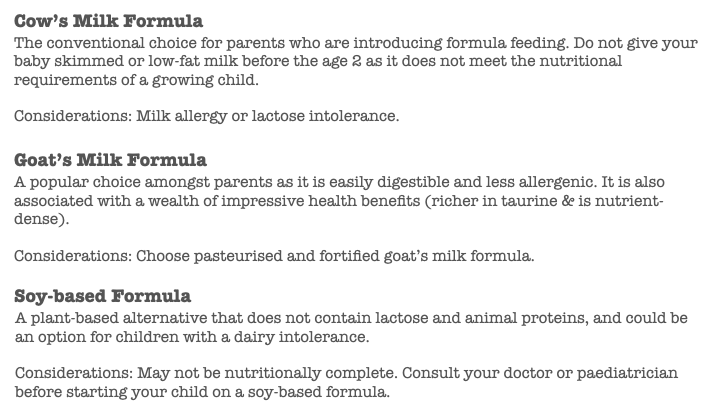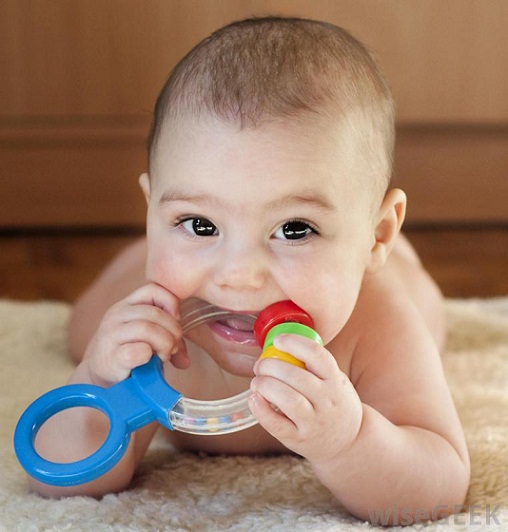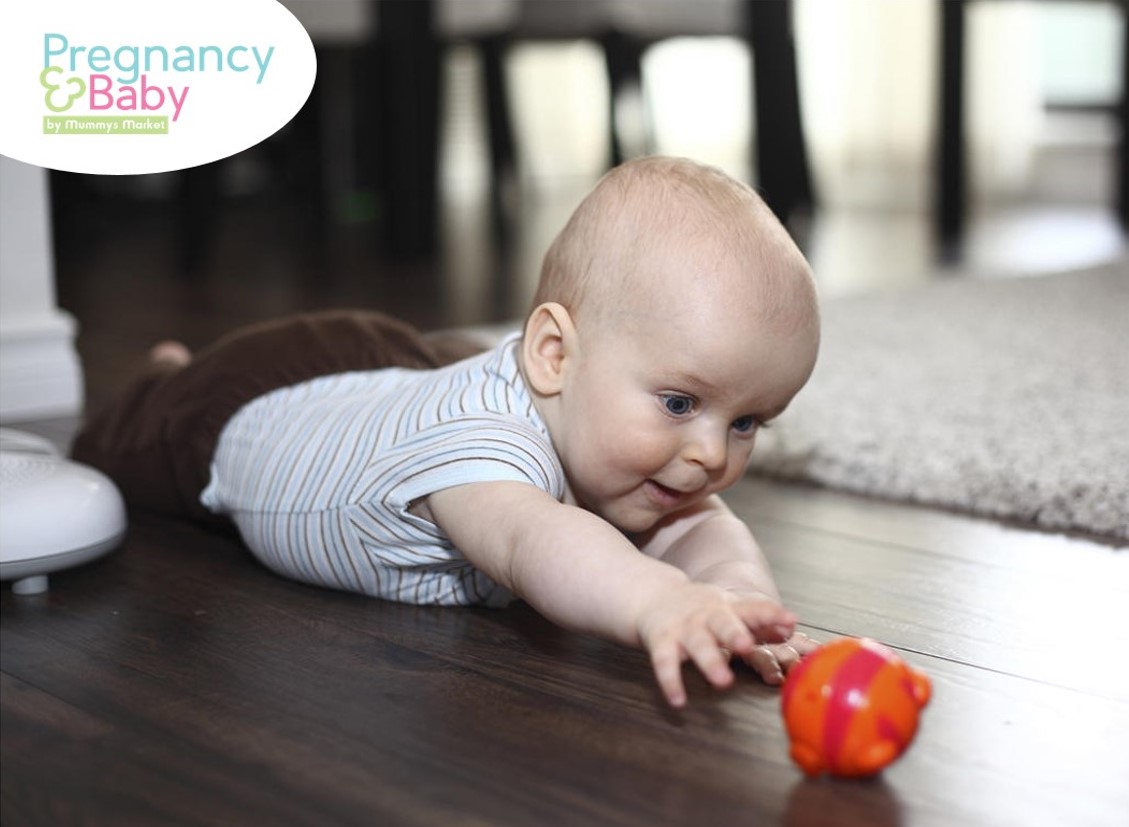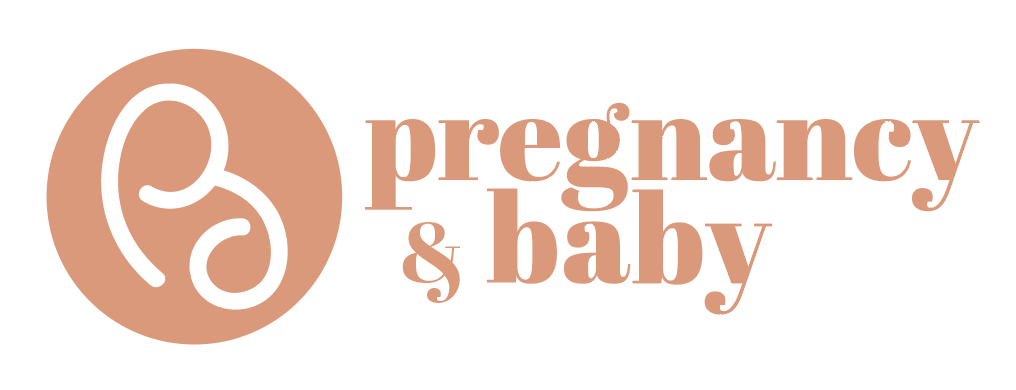
|
Breast milk is recommended as the optimal source of nutrition for your baby for the first 6 months. Formula milk is the next best alternative when breastfeeding is not possible or when weaning your child. There is often a big debate on the best type of formula milk for your child, so we’ve compiled a list of commonly asked questions and concerns that parents may have when it comes to choosing the best formula milk for your little ones.
|
|
Q: At what age should I introduce formula milk? For the first 6 months, the World Health Organization recommends exclusive breastfeeding. Thereafter, infants should receive complementary foods with continued breastfeeding up to 2 years of age or beyond.1 The best time to introduce formula milk is at the 6 month mark as a complementary food to breast milk. Formula feeding becomes an essential part of weaning to supplement the nutritional needs of children during this developmental stage.
|
| Q: What are the main types of formula milk? |
 |
| Q: What’s the key difference between goat’s milk formula and cow’s milk formula?
All formula milk sold in Singapore is safe and nutritionally complete for your baby to consume. If you’re worried about tummy troubles or allergies, goat’s milk formula is recommended over most dairy-based infant formula as it is less allergenic and more easily digestible. Goat’s milk is also associated with a wealth of impressive health benefits that make it the preferred choice amongst parents. |
| Q: Is it true that goat’s milk formula is a better alternative for sensitive tummies?
Milk allergy is often triggered by the presence of allergenic casein protein, ∝s1-casein, and goat’s milk formula is known to be ‘gentler on the tummy’ as it naturally contains lower levels of ∝s1-casein. This unique property in goat’s milk is the secret to being naturally easier to digest. The casein micelles in goat’s milk are also 40% larger than those from cow’s milk, creating more porous curds for efficient digestion and giving goat’s milk formula a digestive edge over other dairy-based formulas. 2 Strong tummies rely heavily on the presence of “good” bacteria like probiotics to boost your child’s gut health, and prebiotics are the food for probiotics in the gut. A healthy presence of prebiotics can also help babies absorb more water from their gut, preventing constipation and bloating. Goat’s milk is also particularly rich in prebiotic oligosaccharides and contains six times the amount of oligosaccharides as compared to cow’s milk.3 Regular consumption of goat’s milk formula can help boost your child’s prebiotic intake to ease tummy troubles and strengthen gut health. Happy tummy, happy mummy!
|
|
Q: Is goat’s milk formula more nutritious? Goat’s milk formula is a nutrient-dense food – children do not need to consume a lot of it to meet their daily nutrient requirements. A single cup of goat’s milk contains 40% of the daily calcium requirement and a particular amino acid, Taurine, is especially rich in goat’s milk, amounting to 20 times more than that of cow’s milk.4 Taurine is essential in supporting brain development and muscular functions in children, and since babies do not produce it naturally, it has to be obtained from breast milk or formula milk. Among the many valuable properties of goat’s milk is the natural richness of nucleotides – building blocks of DNA essential for the development of the immune function, gastrointestinal development and metabolism in babies and toddlers. Formulas using whole goat’s milk have 40-50% higher naturally-occurring levels of nucleotides than other dairy-based formulas.5 Goat’s milk formula is also a preferred choice as it is rich in iron bioavailability – meaning it can be absorbed and utilised by the body. Research has also shown that iron present in goat’s milk is absorbed at similar levels to that of breast milk and is thus a better source of iron for infants than cow’s milk.6 |
|
Q: What’s the best way to introduce formula milk to my child? Whether you are introducing formula milk or transitioning from breastfeeding to formula, it is best to ease into it and choose a time when your baby is in a good mood. A cranky or sleepy baby isn’t going to be thrilled with trying something new, so steer clear of introducing formula during the witching hour (late afternoon till early evening) or close to bedtime. It is recommended that you start with one bottle per day at the time of day when your baby is their happiest and most calm. Once you’ve established this routine, you can gradually increase the number of formula feedings per day. |
|
Q: Any recommended goat’s milk formula in Singapore? If you are looking to introduce goat’s milk into your child’s diet, powdered goat’s milk formula is the preferred choice for toddlers and children as it contains natural ingredients like MCFA, Sn2-PA and vitamins (A, D, E, K). Karihome® goat’s milk also undergoes a single heating phase production to retain its natural nutrition, differentiating it from other traditional productions that undergo the heating process multiple times. It is then spray-dried at a low temperature to preserve its natural nutrients. New Zealand’s Karihome® Goat Milk Formula is a preferred choice as their infant formulas are made with 100% whole goat’s milk sourced from 72 dedicated farms around New Zealand and processed in an ISO 9001 certified factory. Additionally, their formula milk is enriched with DHA, EPA, AA and other minerals and vitamins that are formulated to meet the nutritional needs of growing toddlers and young children.
|
|
Natural Nutrition For All Ages Karihome® also carries a whole range of formulas that have been specially fortified with added nutrients to meet the nutritional needs of infants, toddlers and children, so you won’t have to worry about transitioning between brands when your child reaches a certain age. Supplement your child’s diet with Karihome® Goat Milk Formula to ensure that your little one is getting a wholesome blend of essential nutrients without the side effects of a milk protein sensitivity. WIN a Karihome® hamper worth over $70!* *Each hamper contains:
Like Karihome Singapore Facebook page & answer this simple question on Mummys Market Pregnancy & Baby FB Page to win! Q: Goat’s milk formula is nutrient-dense and a single cup contains _____ of the daily calcium requirement.
Try Karihome® goat’s milk formula for FREE today!* Click HERE for free samples. *Terms & conditions apply |
|
References: 1WHO recommendations for Breastfeeding 2Comparative Protein Composition Analysis of Goat Milk 3Goats’ Milk Is More Beneficial To Health Than Cows’ Milk, Study Suggests 4Taurine a valuable component of goat milk 5Naturally high content of nucleotides in goat milk based infant formula 6The Milky Way: The implications of using animal milk products in infant feeding |

It’s never too early to start engaging baby’s senses! Even before she is born, she’s tuning in to your voice and everyday sounds, feeling your movements and tasting the food you eat.
You can help to stimulate her senses with everyday activities. Even if she doesn’t seem to respond, you can be certain that she’s enjoying the attention you’re giving her. it’s just a start of a lifelong communication between the both of you!
Will sensory games or activities will boost baby’s development?
Sight
Until she’s around 5 months old, her eyesight will still be a little blurry. But she can make out the details and outlines of your face.
Between two months and four months, your baby will start making eye contact with you. She may even smile, “talk” or make gestures. Your responses to her little signals will help her understand her sense of self, as well as helping the two of you bond.
Another skill she’s developing in these early months is how to coordinate her head and eye movements. This will help her watch moving objects and understand how they relate to other objects around them. You can help her develop this skill by slowly moving a toy across her field of vision and encouraging her to watch it.
Touch
Your baby’s sense of touch is highly developed at birth. Her mouth is particularly sensitive to textures and temperatures, and she’ll be keen to use it to explore new objects.
From around five months, your baby may start to reach out for objects. You can encourage her physical development by placing a toy within her eyesight but just out of reach. Watch as she shuffles, stretches or rolls towards it! Hanging a rattle or mobile where she can kick at it, will also help to teach her about cause and effect.
Gently stroking and massaging your baby will use her sense of touch to soothe and reassure her. You’ll probably find it lovely and relaxing too!
Hearing
Your baby recognises your voice from birth. She can detect if you switch to a different language, and she’ll be more responsive to a happy tone of voice than a neutral or sad tone. Every time you talk to her, your baby is listening and learning about different sounds, rhythms and patterns.
When you’re speaking to your baby, give her a chance to respond with a smile, gurgle or laugh. When she responds, answer her back. This shows your baby that you’re interested in what she has to say, as well as helping her language and understanding to develop.
Babbling, playing and laughing with your baby is also important for your own wellbeing. It triggers the release of the hormone oxytocin, which helps create that close and loving bond between you. Your baby’s dad will also produce oxytocin when he holds, plays with or chats to your baby. The more oxytocin he produces, the more engaged he’s likely to become.
For more pregnancy and childcare tips, subscribe to our mailing list and like us on Facebook, to receive new articles for mummies like you every week!
.jpg)
4. Presentation of reading materials
Offer your babies a variety of books presented in different materials, textures, shapes, sizes and formats. Think books made of thick sturdy cardboard, cloth, and wipe-off plastic, to name but a few. Interactive books with pop-up pages or have things within to touch, feel and hear are appealing too. With the proliferation of touchscreens these days, parents can also opt for digital readers designed specifically for kids, which can hold lots more titles and feature appealing animations as well.
5. How to read
Use your voice to emote whatever you are reading aloud. Don’t worry about feeling silly; you will be rewarded when your baby grows to love particular parts of a book because of your expressive sounds! This is also known as “voice inflection” and is defined as “the way we change the tone of our voice to emphasise key words” (Speaking of Speech: Harrington and Le Beau).
With the right tone of voice and inflection appropriate to a baby’s development (for e.g., they can grasp basic feelings, like anger) you can read almost anything. The editorial section of a newspaper can even be read to calm a baby, if the tone of voice is right!

Take the opportunity to stimulate your baby’s senses too. If the story has wind blowing, then gently blow into your baby’s ear. If the story has movement, then bounce your baby gently on your knee. If there’s a hungry crocodile, then use your fingers to mimic its jaws gently snapping your baby’s tummy. Once they have become familiar with the story after repetitive readings, they will begin to eagerly anticipate certain parts of the story. This is actually teaching story prediction (knowing what comes next).
Continue reading on the next page...
What’s next?
Initially, not everyone will feel natural when reading aloud to children this young, especially infants. Some parents may even find the idea quite unusual, since they assume the baby isn’t fully comprehending the story being read to them.
Even if your baby’s attention appears to wander from the book, keep at it instead of calling it a day! Don’t be disheartened. Prepare to be flexible and focus instead on spending quality time to bond with baby over this activity until it becomes a beloved habit, which it likely will gradually become, over time (refer to #1).

Once your baby has a few books they grow fond of, leave them in accessible places for them to find, like at the bottom of a bookshelf or a basket. Some babies will eventually seek out their favourite books as a means of independently entertaining themselves. They will flip the pages, “read” to themselves, even try to imitate the sounds you make. Other babies will grow to enjoy the activity so much that they might try to get you to read to them more often – possibly even outside the scheduled time!
As parents cultivate their child’s appreciation for reading, they will also notice the manifestation of early pre-reading skills. These include orientating the book the right way, turning the pages in sequence, associating the pictures with the action, and learning that the words which are being read to them tell a story – collectively, these skills are all essential for early readers.
Continue reading on the next page...
Remember: Read often, make reading fun, help your child interact with the reading material, and involve your child actively in the story throughout. Before you know it, they’ll be making reading choices of their own as they grow older. Encourage them to have a wide repertoire of reading topics, and regularly recite to them these words of wisdom from Dr. Seuss: “The more you read, the more things you will know. The more that you learn, the more places you’ll go!”

Here’s where to get your child’s reading fix:
Libraries: Singapore’s numerous public libraries are extremely accessible and it’s also really easy to borrow reading materials. Visit www.nlb.gov.sg to find out more about membership and borrowing privileges. Or head to http://search.nlb.gov.sg/ to look up specific titles and even make a reservation.
Bookstores: Most local shopping malls have at least one bookstore tenant. Books Kinokuniya at Ngee Ann City is a popular haunt, while other familiar names include Times, Popular and the MPH chain of bookstores.
Online: Beyond the usual suspects of Amazon, Barnes & Noble and Fishpond, go niche by supporting local online book retailers who specialise in titles for babies, pre-schoolers and young children:
www.flipforjoy.com.sg: For parents looking to raise bilingual bibliophiles, this site offers a good range of Chinese books for kids from birth to 9-years-old.
www.thegroovygiraffe.com: Singapore’s first official online remainder bookshop for kids up to 12. All their books are overstock and overprint titles (which define “remainder”), so prices are heavily marked down. There’s a Children’s Laureate section for award-winning titles and even a Cookbook category for culinary-inclined caregivers!
www.littlegoodbooks.com: Run by a mother of two kids, this site offers a selection of books for newborns to kids aged 7. As all the titles are handpicked by the owner herself, littlegoodbooks prides itself on quality and not quantity.
www.myimaginationkingdom.com: This online retailer has also set up shop at One KM mall on Tanjong Katong Road. There are books for babies to 12-year-olds, and local children’s authors are available too. There’s also a dedicated section for parents and teachers with educational books about reading and mastering the art of storytelling.
If you like this article, share it with your friends!

From newborn to toddler, it just takes 12 months for your baby to undergo an unbelievable transformation. Babies grow at a rapid pace and every proceeding month brings in new developments. It is obvious that all new parents wonder what to expect next in their baby and how to know if their baby’s development is in the right track. No matter what pace your baby develops, there is a fairly wide window for a baby to reach every developmental stage.
You can look forward to your baby reaching many milestones in the first 12 months like crawling, babbling, teething and grasping. If your baby can reach one milestone sooner, she may get another one later since her body will be busy in perfecting one skill. Keeping all these variations in mind, learn what is normal and what to expect each month of your babies first year.

Read more on Baby 1st Month Development

Read more on Baby 2nd Month Development

Read more on Baby 3rd Month Development

Read more on Baby 4th Month Development

Read more on Baby 5th Month Development

Read more on Baby 6th Month Development
Continue on next page...

Read more on Baby 7th Month Development

Read more on Baby 8th Month Development

Read more on Baby 9th Month Development

Read more on Baby 10th Month Development

Read more on Baby 11th Month Development

Read more on Baby 12th Month Development
Subscribe to our mailing list and LIKE US on Facebook for useful insights on parenthood
.jpg)
Actual and factual
While teething is a relatively straightforward affair, there is some sound advice surrounding the topic—and which may, in fact, even help in getting past the bumpiest stretches without adding to the pain.
Don’t over-depend on pain relief gel. Anaesthetic gels can numb the back of your baby’s throat to the extent it weakens his gag reflex, which is a vital instinct that stops him from choking on his own saliva. Since 2009, the Commission on Human Medicines has also recommended that topical oral pain-relief products that contain salicylate salts, such as choline salicylate or acetylsalicylic acid (Aspirin), should not be given to children younger than 16 as they may cause a severe allergic reaction.
Don’t massage baby’s gums with alcohol. Contrary to some old wives’ tales which claim that this “trick” supposedly works for teething relief, any amount of alcohol (even a tiny drop) is simply not meant for individuals as young as infants.
Minimise use of fluoride. International researchers have in recent years concurred that fluoride is toxic in excess and may even damage a child’s developing brain cells, leading to lower IQ levels. Because babies are likely to swallow toothpaste instead of spitting it out, most public health advocators recommend using a non-fluoridated toothpaste for babies under the age of two or to use an amount no bigger than a grain of rice.
Create good dental practice from the start. As soon as your baby’s first tooth appears, buy a suitable toothbrush to gently brush it using an up-down movement. Avoid offering your baby too many sweet, sticky foods and don’t let your baby fall asleep with a bottle to prevent tooth decay. It is also a good habit to clean baby’s teeth and gums gently with a warm and wet washcloth after each feeding.
Notes on teething rings. Refrain from attaching the teething ring around baby’s neck with a carabiner and chain as this could pose a strangulation risk. Liquid-filled teething rings are not the best choice as these could break and leak. If you do use this type of teething ring however, pop it into the freezer for fast cooling. Remove it before the liquid inside solidifies, making the ring become too hard when it comes into contact with your baby’s gums.
Additionally, you can engage your baby with entertaining activities to while away the time and attempt to distract him from the pain of teething. Parents, bear in mind that teething is a phase that won’t last forever, and it comes with a result that will be worth it in the end — a wonderful pearly smile for your baby!
For more pregnancy and childcare tips, subscribe to our mailing list and like us on Facebook, to receive new articles for mummies like you every week!

At this stage, you may find your baby doing almost nothing apart from crying, sleeping and feeding on your breast milk. However, with time you will find her getting more responsive and alert.
What your baby needs at this stage is a strong sense of attachment. Your gentle love and care will protect her and support her all through the growing up process.
Though she may be tiny, there are a host of developments she will be going through. You need to remember an important fact that if your baby was born prematurely, she may not exactly follow these milestones. Understanding your one month baby developmental milestones will help you know what you can do to ensure his best possible growth. Clear all your doubts with your doctor and see your baby grow.
Take a look at the physical developments you may notice at this stage:
Some of the touch and smell developments that you can look out for are:
Your one month old baby has developed some hearing and visual milestones. Take a look below:
You can place your one month old on her tummy to help her strengthen the muscles in her neck. It will be difficult for her to lift up her head, so it is better to keep her on the tummy for short spans and see if she likes it.
Your one month old still does not need toys to keep her engaged. This is the time when she is busy exploring her hands.
You must notify your doctor if in the second, third or fourth week you notice any developmental delays. These could be any of the symptoms below:
You must follow the guidelines that your doctor suggests in these cases. There is no need to press the panic button; rather leave it on the expert as he shall suggest the right solution.
This is one of the most amazing times that you along with your partner must enjoy. You will be thrilled to see how your baby will transform over the months.
Subscribe to our mailing list and LIKE US on Facebook for useful insights on parenthood!
Article written by Moumita Ghosh

When it comes to measuring developments in your baby, you need to keep in mind the fact that development is not a race. Irrespective of the pace at which your baby develops, she will be reaching all the milestones by the time she is a year old.
See your baby growing and enjoy this wonderful phase rather than comparing her developments with other babies.
Here we shall discuss what developments your 2 months old will be going through. You can talk to your doctor about the milestones she has reached and ask about what you can expect next. Go through the following to know your 2 month old baby developmental milestones:
By the time your baby has reached 2 months you can see some significant physical developments in her:
During the time of birth the size of your baby’s brain was 25% of the size of your brain. By the time she is a year old her brain size will be 70% of the size of an adult brain.
Your baby has started communicating at this age.
Even your 2 month old has reached some of the milestones by this time. Take a look:
There are some major concerns at this age that you should be careful of. Take a look below:
You must get in touch with your doctor if you notice any of the symptoms. Early diagnosis and treatment is extremely essential.
To ensure proper growth and development, here are some things that you can do:
In case your baby does something earlier or later than other babies you know of, it should not bother you. As mentioned before, every baby develops in her own pace.
Your baby shall learn watching you and others around her. While she is bonding and getting attached to you, she also understands that she is a separate individual. Diverse experiences and your personality shall help her shape relations with others.
Subscribe to our mailing list and LIKE US on Facebook for useful insights on parenthood!
Article written by Moumita Ghosh

Your darling is now 3 months old! She is now a lot more responsive than before, isn’t she? She has lost many of her newborn reflexes by this time and is gaining voluntary control over her movements. We are sure you will love to look at her movements for hours together.
For more information on 3 month baby development, here is a detailed post.
You will find her having a good time familiarising with things around her. She now turns to the direction from where your voice is coming and may smile spontaneously. Apart from this here are more developments you will notice in your three months baby.
You will be in awe how fast your newborn is growing. Here are some adorable changes you will get to watch:
You will find your baby visibly bigger now. If you have pictures of her as a month old baby, you can compare it with how she is now! She looks longer and rounder at 3 months.
Be prepared for the delightful sequels and coos at this age. This is the way she makes her presence felt.
Your child is now looking for a toy to play, and let us tell you, the best toy for your 3 months baby is you!
As your baby has discovered the joy of putting things in her mouth, there are potential risk factors that you should be careful of.
Babies follow their own pace when it comes to developments. In rare cases, failure to reach a developmental milestone may signal developmental or medical problems requiring special assistance. In case you notice any of the following signals, you need to notify your doctor immediately:
For most working moms, their maternity leave ends in three months after their delivery. In case you are planning to do get back to your job at this time, you need to arrange for a caregiver.
Take a look at some of the important questions that you need to ask yourself:
Your baby is beginning to recognize special objects and people around her. She may have her own special toy or blanket that she loves to sleep with. Carry that with you in the child care or to your care giver, so that she feels at home.
Subscribe to our mailing list and LIKE US on Facebook for useful insights on parenthood!
Article written by Moumita Ghosh

It’s been four months since your tiny bundle of joy made your world beautiful. The little junior now looks straight into your eyes, babbles, recognizes you and above all melts your heart with that charming smile. Motherhood is blissful, and you get a greater realization of it when your baby completes the fourth month of his life.
| ACHIEVED DEVELOPMENTAL MILESTONES | EMERGING DEVELOPMENTAL MILESTONES |
|---|---|
| Responds to basic sounds and words | Learns to respond to his own name |
| Supports body with arms during tummy time | Can roll over from tummy to back |
| Smiles and laughs while looking at faces | Responds differently to specific facial expressions |
| Tracks nearby objects | Can track objects moving farther |
| Sits with support | Sits without support for short durations |
| Makes basic movements when on tummy | Begins to crawl when placed on tummy |
| Can hold toys with both hands | Passes toys from one hand to another |
| Cries differently for different feelings | Makes different sounds for different feelings |
| Pushes legs downwards while standing with support | Supports weight on both legs while standing with support |
| Watches new faces and objects keenly | Shows active curiosity towards new objects and people |
In addition to these basic milestones, your baby will learn several other skills.
Here we list the various cognitive, physical, and social and emotional skills that your four-month-old would achieve.
Cognitive skills pertain to the baby’s intelligence, rationality and decision-making capabilities.
Continue on next page...

These developmental milestones are the ideal physical, mental and social achievements at the age of four months. If your baby does not show any of these it does not necessarily mean he has a problem or is lagging behind other infants. Just like adults, babies have personalities and may take their time to understand and learn various nuances of life. If he cannot do something today, he might do it the next week or perhaps the next month. It is just that he is taking his time.
However, you should be alert if you observe certain traits that could indicate serious developmental delays. Following are the important ones:
Always remember that any developmental delay in your baby does not mean that he definitely has a problem. It could simply mean that your baby is taking time to learn and grasp new skills. But if your baby is unable to do something that babies of his age generally are able to do then the question arises “Why is he unable to do so?”. The answer could be less sinister than you may imagine and it is best to leave it to the diagnosis of a medical practitioner. There are always things you can do to prompt and encourage 4 month old baby development by following certain best practices.

The right amount of stimulation can help nurture your four-month-old baby’s development. A baby is most attached to his parents. Therefore, it is quite natural for a four month old baby to learn new skills from you every day. Maintain a healthy routine of play and socialize with him to keep your baby on track with his development. That way he is quite likely to surprise you with a new skill every day and do not forget to take a snap the next time he shows off his new-found capabilities!
Subscribe to our mailing list and LIKE US on Facebook for useful insights on parenthood!
Article written by Moumita Ghosh
Copyrighted Pregnancy & Baby by Mummys Market 2019


